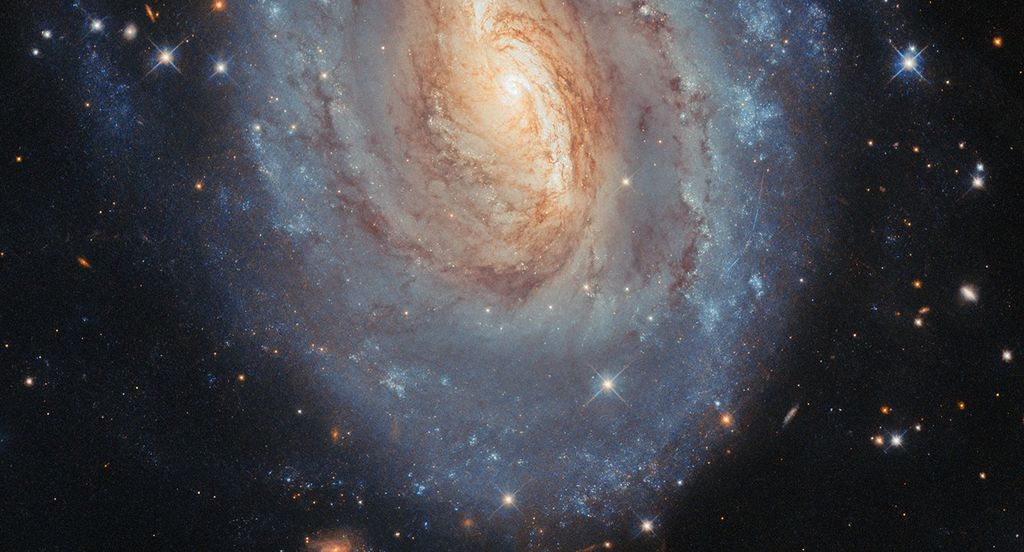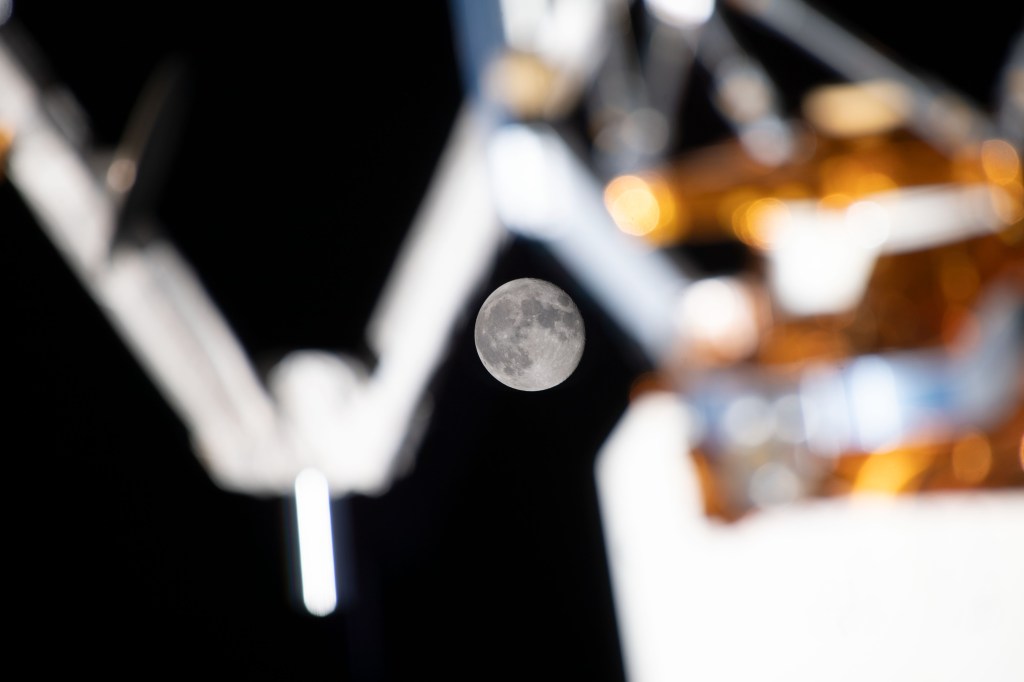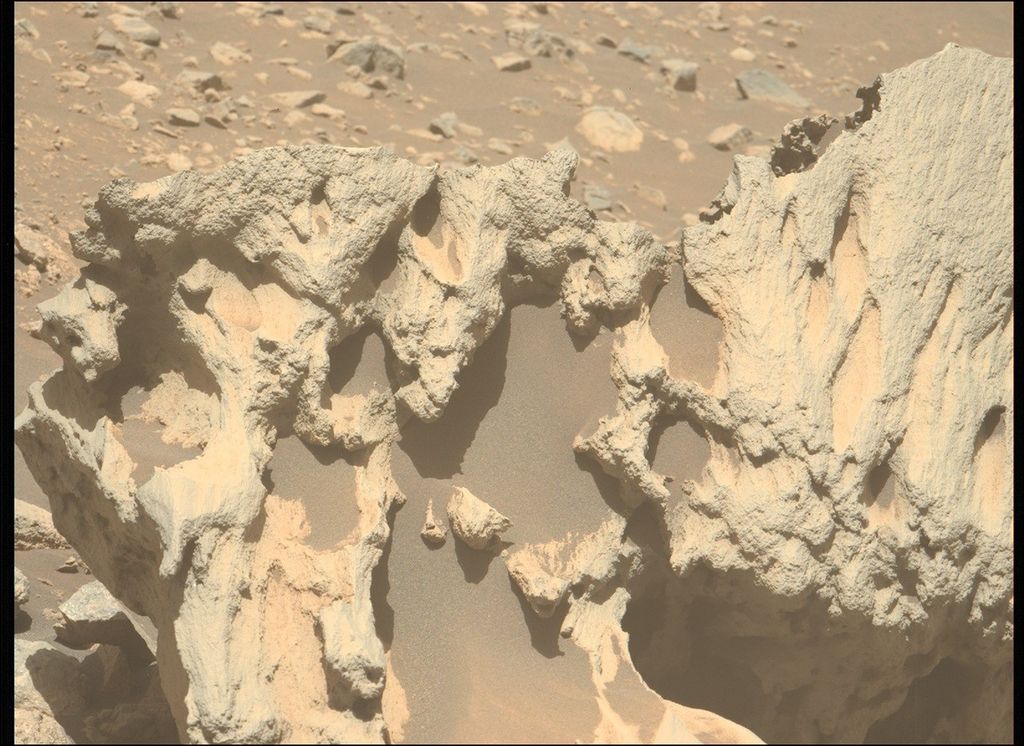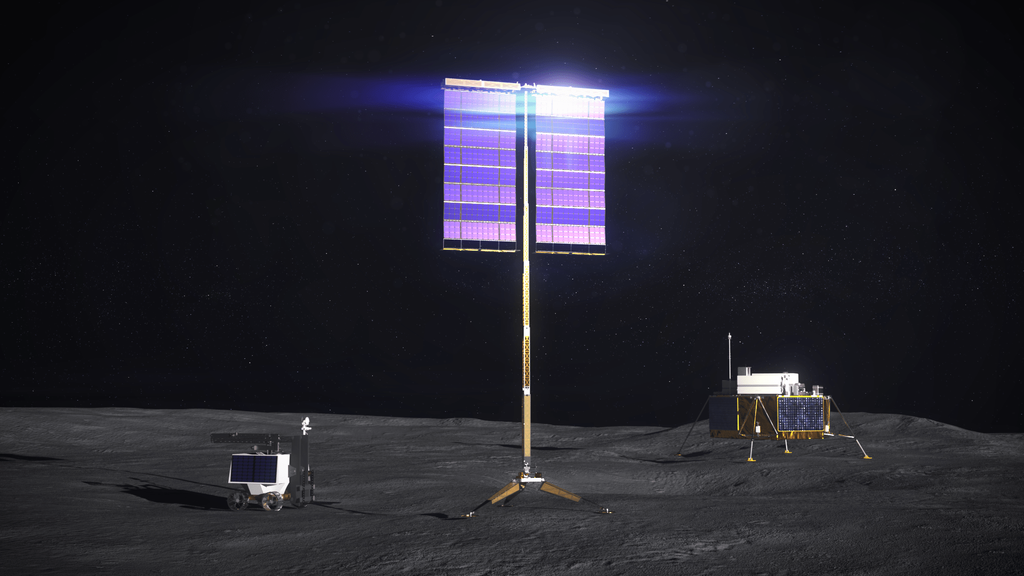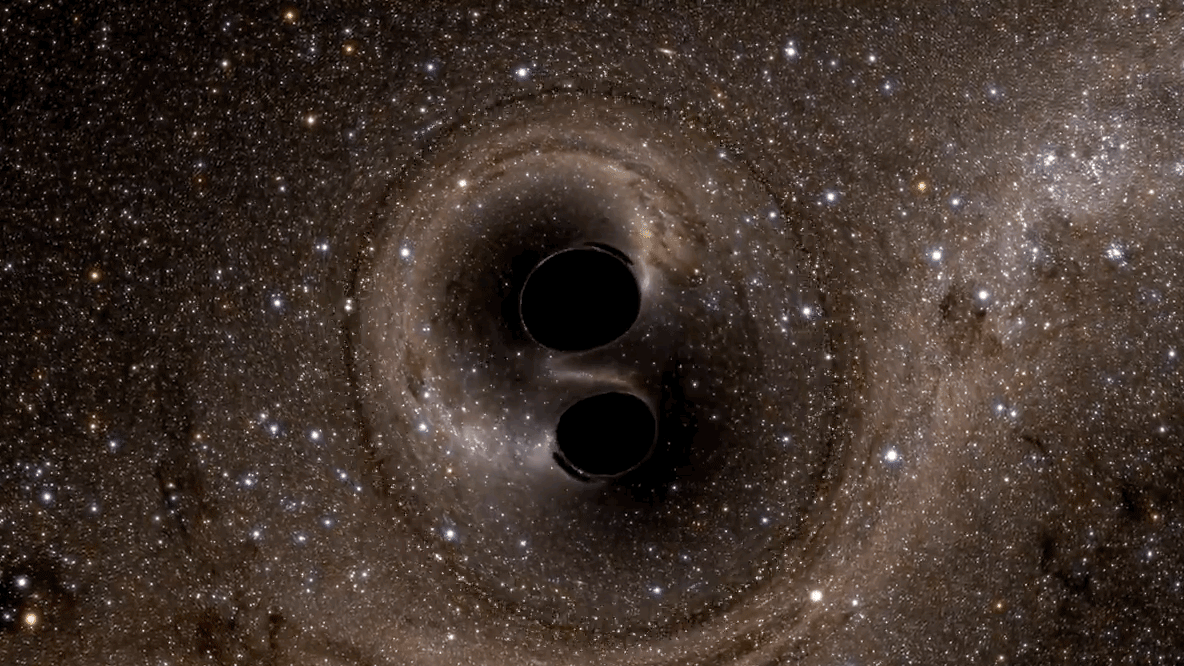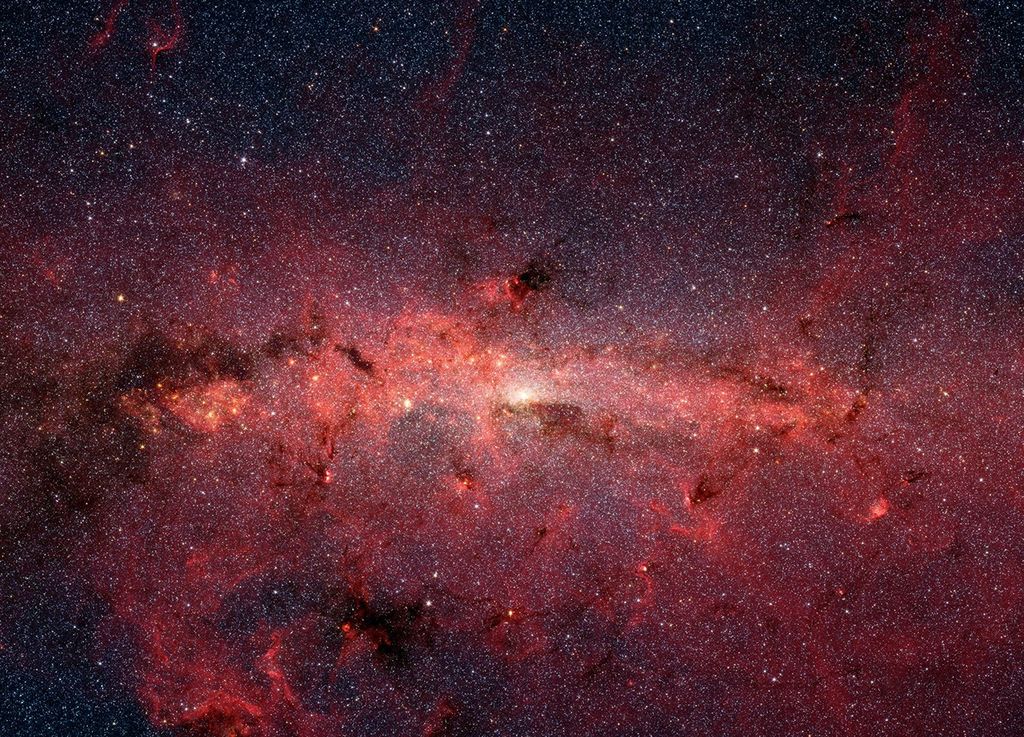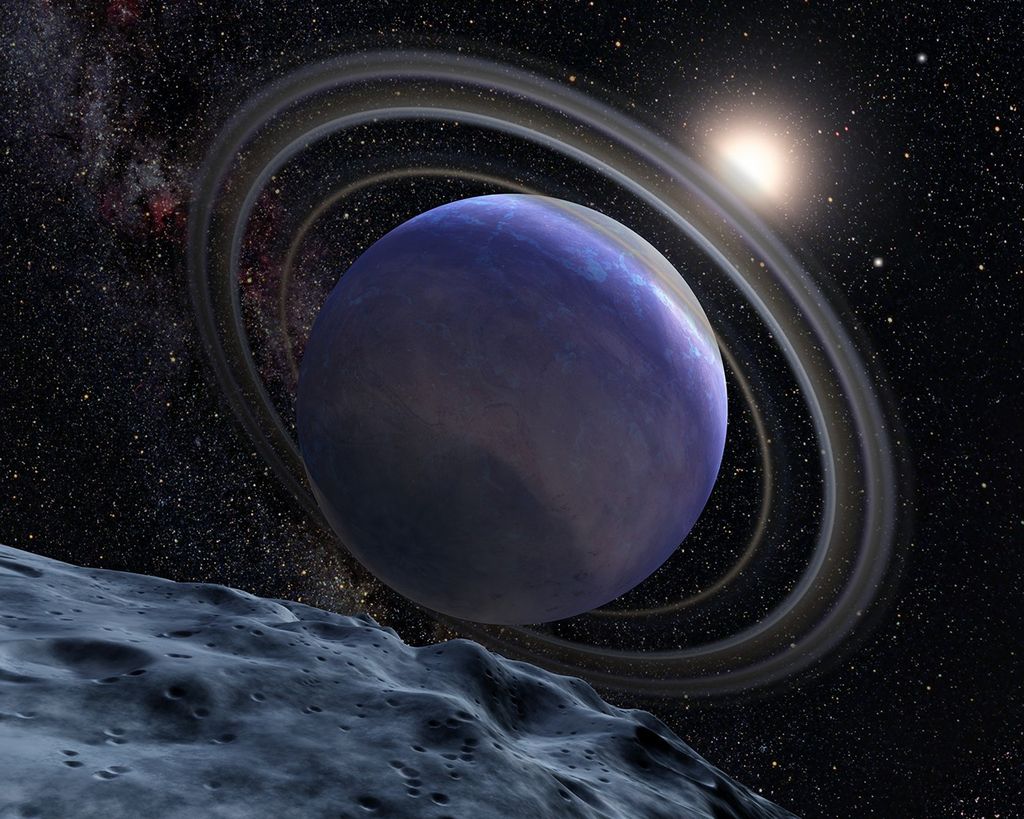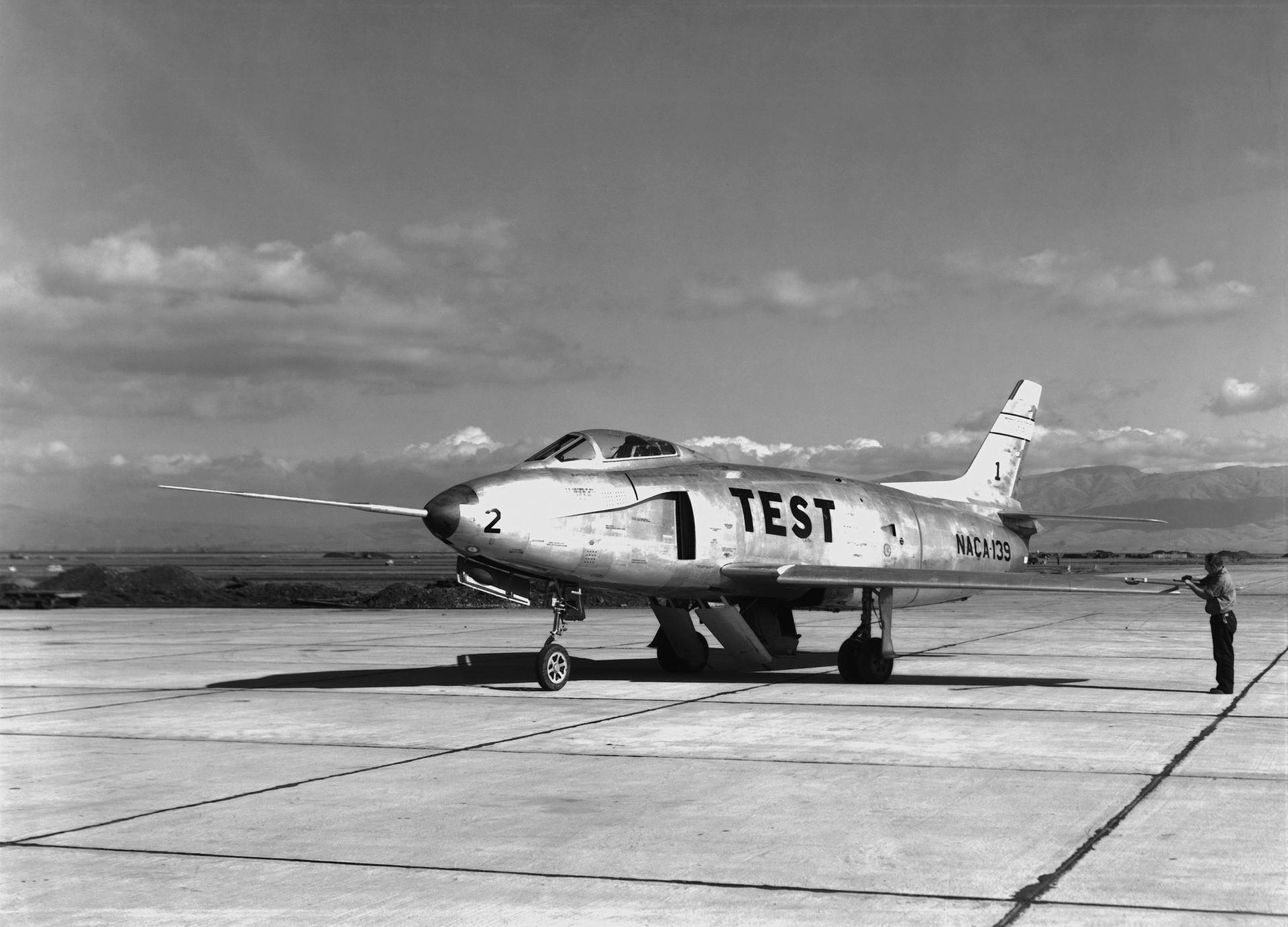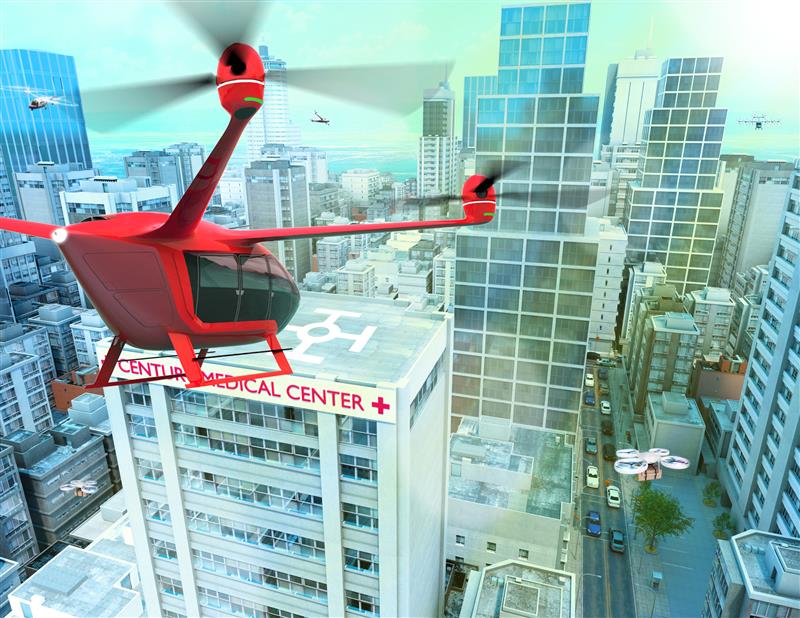1 min read
3C 321: Galaxy Fires at Neighboring Galaxy

This composite image shows the jet from a black hole at the center of a galaxy striking the edge of another galaxy, the first time such an interaction has been found. In the image, data from several wavelengths have been combined. X-rays from Chandra (colored purple), optical and ultraviolet (UV) data from Hubble (red and orange), and radio emission from the Very Large Array (VLA) and MERLIN (blue) show how the jet from the main galaxy on the lower left is striking its companion galaxy to the upper right. The jet impacts the companion galaxy at its edge and is then disrupted and deflected, much like how a stream of water from a hose will splay out after hitting a wall at an angle.
Each wavelength shows a different aspect of this system, known as 3C321. The Chandra X-ray image provides evidence that each galaxy contains a rapidly growing supermassive black hole at its center. Hubble's optical light images (orange) show the glow from the stars in each galaxy. A bright spot in the VLA and MERLIN radio image shows where the jet has struck the side of the galaxy - about 20,000 light-years from the main galaxy - dissipating some of its energy. An even larger "hotspot" of radio emission detected by VLA (seen in an image with a much larger field-of-view) reveals that the jet terminates much farther away from the galaxy, at a distance of about 850,000 light-years away. The Hubble UV image shows large quantities of warm and hot gas in the vicinity of the galaxies, indicating the supermassive black holes in both galaxies have had a violent past. Faint emission from Chandra, Hubble and Spitzer, not shown in this image, indicate that the galaxies are orbiting in a clockwise direction, implying that the companion galaxy is swinging into the path of the jet.
Since the Chandra data shows that particle acceleration is still occurring in this hotspot, the jet must have struck the companion galaxy relatively recently, less than about a million years ago (i.e. less than the light travel time to the hotspot). This relatively short cosmic time frame makes this event a very rare phenomenon. This "death star galaxy" will produce large amounts of high-energy radiation, which may cause severe damage to the atmospheres of any planets in the companion galaxy that lie in the path of the jet. From the Earth we look down the barrel of jets from supermassive black holes, however these so-called "blazars" are at much safer distances of millions or billions of light-years.
About the Object
- R.A. PositionR.A. PositionRight ascension – analogous to longitude – is one component of an object's position.15h 31m 43.4s
- Dec. PositionDec. PositionDeclination – analogous to latitude – is one component of an object's position.24° 4' 20.0"
- ConstellationConstellationOne of 88 recognized regions of the celestial sphere in which the object appears.Serpens
- DistanceDistanceThe physical distance from Earth to the astronomical object. Distances within our solar system are usually measured in Astronomical Units (AU). Distances between stars are usually measured in light-years. Interstellar distances can also be measured in parsecs.Approximately 1.25 billion light-years (380 million parsecs) away.
About the Data
- Data DescriptionData DescriptionProposal: A description of the observations, their scientific justification, and the links to the data available in the science archive.
Science Team: The astronomers who planned the observations and analyzed the data. "PI" refers to the Principal Investigator.The science team comprises: D. Evans, W.-F. Fong, J. Lee, and R. Kraft (Harvard-Smithsonian Center for Astrophysics), M. Hardcastle and J. Croston (University of Hertfordshire, U.K.), D. Worrall and M. Birkinshaw (University of Bristol, U.K.), and T. Muxlow (MERLIN/VLBI National Facility, Jodrell Bank Observatory, University of Manchester, U.K.). - InstrumentInstrumentThe science instrument used to produce the data.VLA>Radio, MERLIN>Radio, SST>IRAC, HST>WFPC2, HST>STIS, and CXO>ACIS
- Exposure DatesExposure DatesThe date(s) that the telescope made its observations and the total exposure time.April - December,1986 (VLA); April 30 and August 12, 1995 (WFPC2); June 5, 2000 (STIS); April 30, 2002 (ACIS); March 27 (IRAC) and June 20, 2005 (MERLIN)
- FiltersFiltersThe camera filters that were used in the science observations.VLA: 1.5 and 5 GHz MERLIN: 1408 and 1658 MHz IRAC: 3.6-8 microns WFPC2: F702W and FR533NR [O III] STIS: NUV-MAMA ACIS: 0.3-8KeV
- Object NameObject NameA name or catalog number that astronomers use to identify an astronomical object.3C 321
- Object DescriptionObject DescriptionThe type of astronomical object.Active Galaxy
- Release DateDecember 17, 2007
- Science Release“Death Star” Galaxy Black Hole Fires at Neighboring Galaxy
- Credit

This image is a composite of many separate exposures made by several of the instruments listed above. The color results from assigning different hues (colors) to each monochromatic image. In this case, the assigned colors are: Purple (X-ray): 0.3-8KeV Red (UV): NUV-MAMA Golden orange (Optical): F702W + FR533NR [O III] Blue (Radio): 1.5 and 5 GHz + 1408 + 1658 MHz
Related Images & Videos

Multi-panel Image of 3C 321
A powerful jet from a supermassive black hole is blasting a nearby galaxy in the system known as 3C 321, according to new results from NASA. This galactic violence, never seen before, could have a profound effect on any planets in the path of the jet and trigger a burst of star...
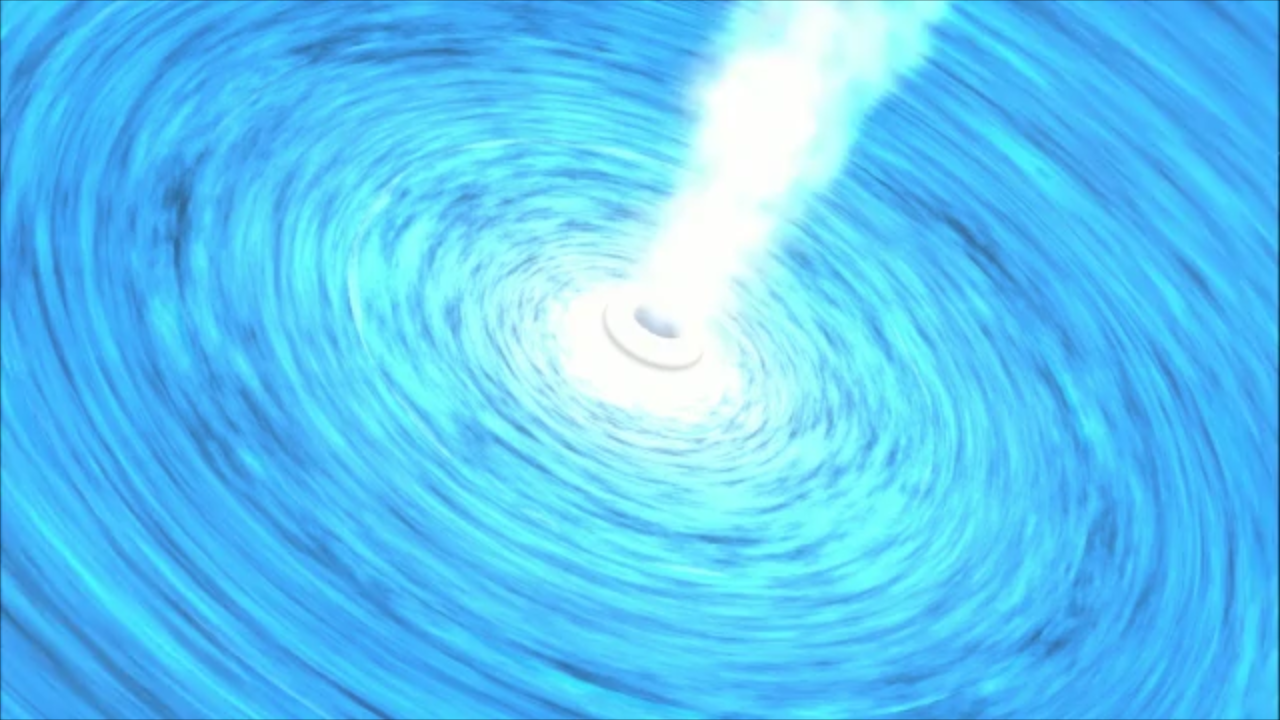
Animation of Galaxy 3C 321
This animation of 3C 321 begins with a close-up of the supermassive black hole in the center of the main galaxy. Hot gas is falling towards the black hole via a blue disk. Some of this material is swallowed by the black hole, but much of it is ejected in a narrow jet of...
Share
Details
Claire Andreoli
NASA’s Goddard Space Flight Center
Greenbelt, Maryland
claire.andreoli@nasa.gov

